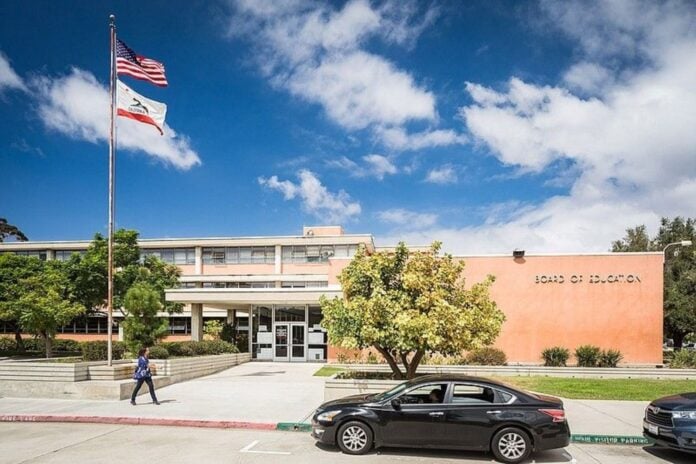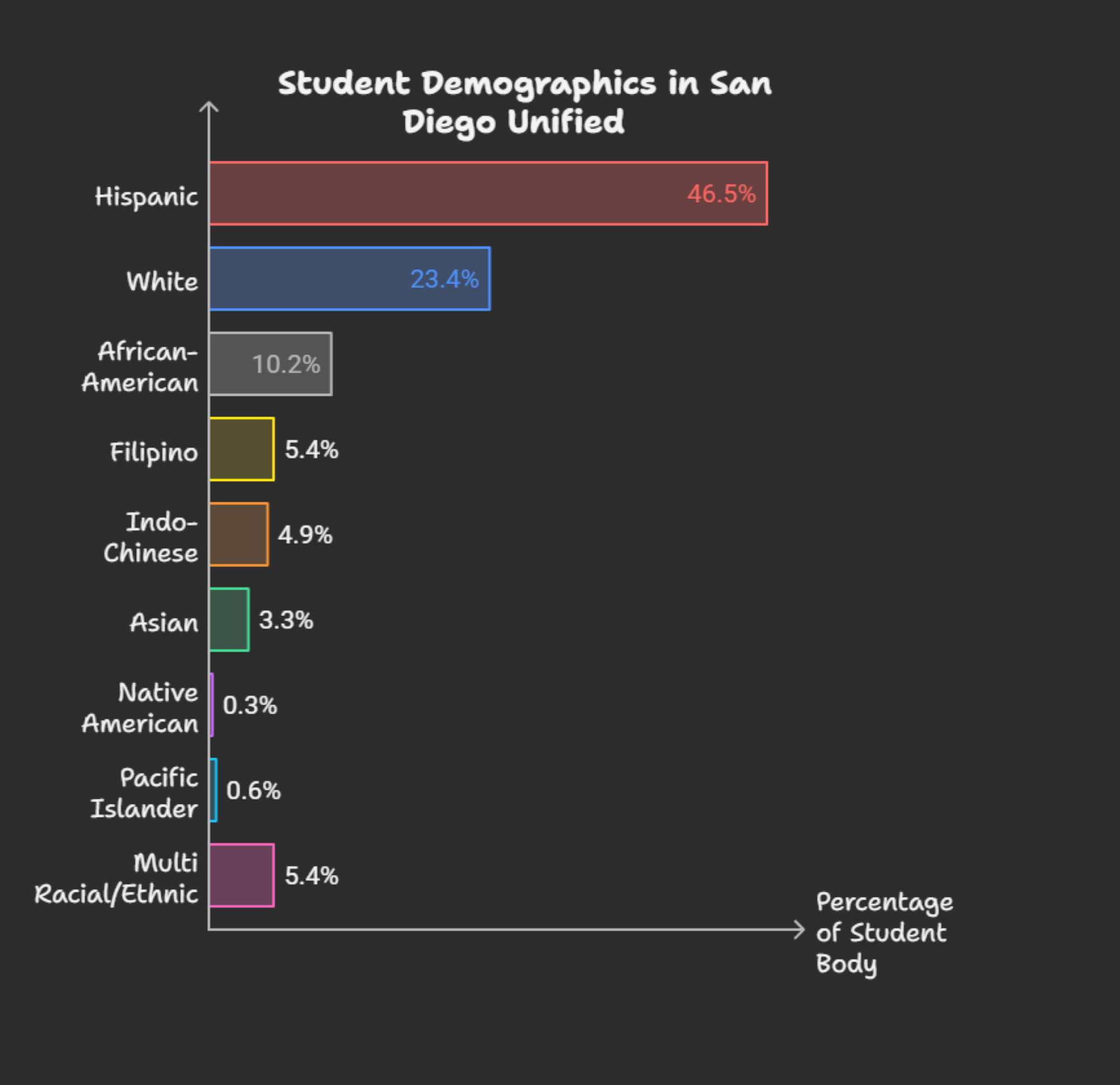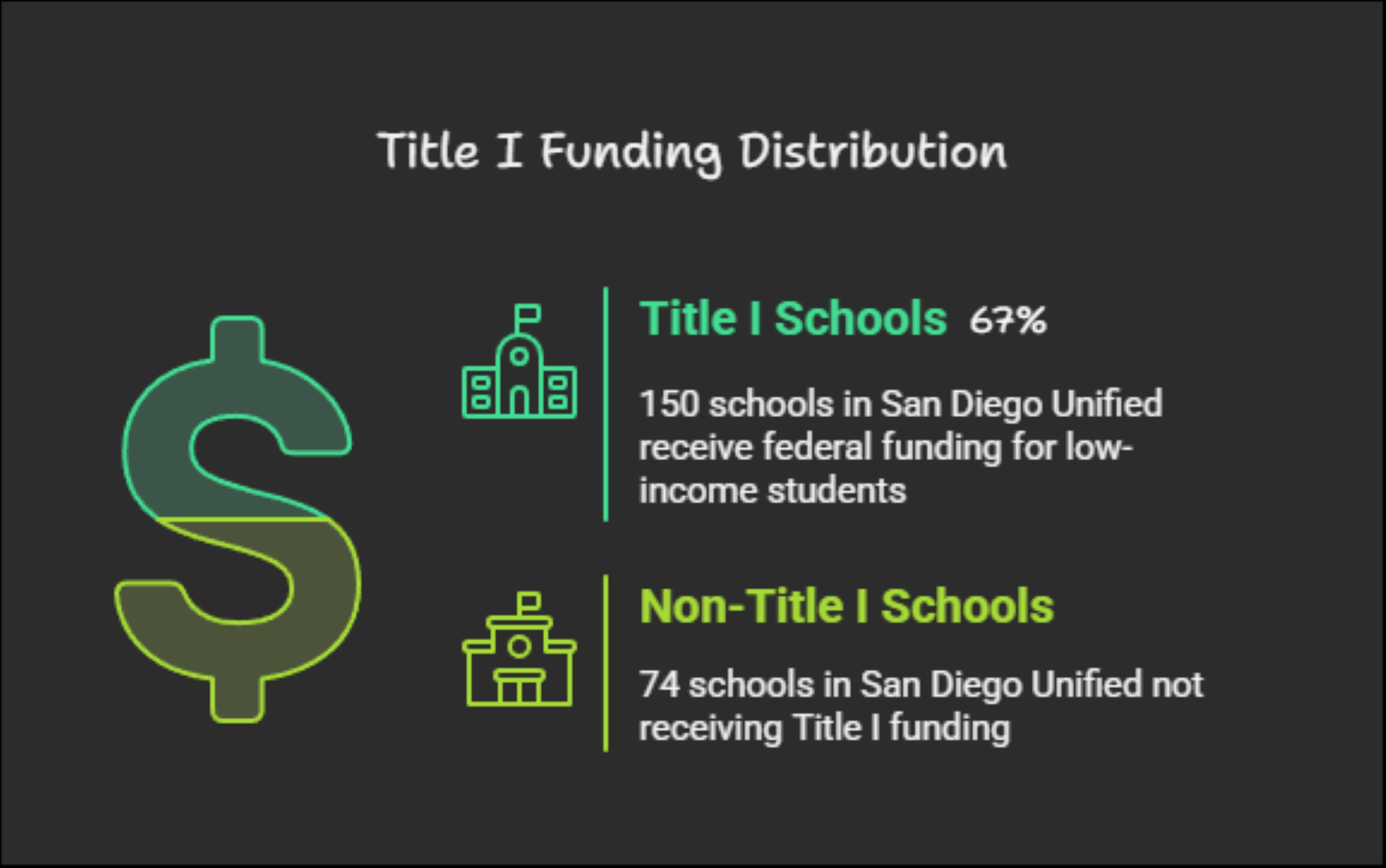
By Macy Meinhardt, V&V Staff, CA Local News Fellow
San Diego Unified leaders are sounding the alarm as the Trump administration moves to dismantle the Department of Education (DOE), warning that the shift could worsen educational inequalities.
This comes as half of the DOE workforce was laid off this month, along with the closure of the state’s Civil Rights Office. Ten days later, on March 20, Trump issued an executive order formally instructing the Secretary of Education, Linda McMahon, to “facilitate the closure of the Department of Education.”
Core functions of the DOE include: enforcing civil rights laws, data collection, student aid, and policy setting.
The DOE also provides public schools with federal grants and formula funding, targeting support for disadvantaged students, special education, and specific programs.
While the administration says that formula funding for schools, which is protected by law, would be preserved, they have cut nearly half the workforce in charge of distributing those funds.
Federal funding only accounts for 6% of San Diego Unified’s $1 billion budget. However, the funding that they do receive from the federal government largely goes to supporting marginalized student populations, such as Title I, free lunch programs, special education, support for military families, and special education funding.
Black and brown students are the primary beneficiaries of funding tied to Title I, which is implemented to close education inequity gaps.
According to Cody Petterson, in an interview with Voice & Viewpoint, a San Diego Unified Board Trustee, it is deliberate.
“There’s no way you can look at this dismantling of the administrative state and the attack on DEI, ethnic studies–and the attack on public education more broadly–without identifying that it is designed to disproportionately impact black and brown students,” said Petterson.
Now, a broad coalition is rallying to block these threats before they hit classrooms. Just last week, San Diego Unified Superintendent Fabiola Bagula, along with trustee members, went to Washington, D.C, to urge lawmakers to protect critical funding sources.
In addition, organizations such as the NAACP, teacher unions, and impacted families have filed lawsuits against the Trump administration and the Secretary of Education for illegally shutting down funding sources already allocated by Congress.
“It doesn’t matter what the federal government is telling us, we understand that part of our calling as educators, as administrators, as board members, is to provide opportunities to our traditionally underrepresented, underserved communities and provide them with a path to prosperity, equality, and opportunity,” said Patterson.
San Diego Unified, at a glance
San Diego Unified is California’s second-largest school district and is considered the state’s fifth most diverse district, according to a Niche analysis, an online education data platform. Ethnicities of students include: 46% Latino, 16% Asian, 14% White, and 9% Black, with over 60 languages spoken.

This diversity is both the district’s strength and its starkest equity challenge, as looming cuts threaten to widen gaps for vulnerable students.
Sixty-six percent of the schools in the district receive Title I funding. The higher the number of low-income students, the higher the amount of Title I funding they are eligible for.
In the 2023-2024 school year, the district secured approximately $19.4 million to support over 150 different elementary, middle, and high schools.
Notably, schools south of Interstate 8 receive the majority of this funding.
Top Three Title I High Schools:
Hoover High School: $820,654
Lincoln High School: $612,322
Morse High School: $521,522
Top Three Title I Middle Schools:
Clark Middle School $406,080
Mann Middle School $347,928
Wilson Middle School $319,153
Top Three Title I Elementary:
Rosa Parks Elementary $375,044
Porter Elementary $317,779
Central Elementary $265,811
A Critical lifeline for low-income schools
Born from the Civil Rights Era, Title I was embedded in the 1965 Elementary and Secondary Education Act as a direct response to systemic underfunding of schools serving Black, Brown, and poor communities.
Title I has evolved into one of the largest federal assistance programs for public schools nationwide. In today’s classrooms, Title I goes towards additional staff like math and literacy specialists, funds for technology and supplies, preschool and afterschool programs, and supporting parental involvement.

While this year’s $18.38 billion allocation for Title I nationwide remains intact, advocates warn these dollars are on the chopping block long-term.
“They want to turn back all of the victories that we had for equality, equity, and opportunity post Civil Rights era,” said Petterson. The cuts also represent a sign of Project 2025 already taking shape, he believes.
Project 2025, a far-right policy blueprint for the Trump administration, explicitly targets the Department of Education for drastic cuts.
“The goal of Project 2025 in relation to public education is effectively to eliminate public education and move to an entirely privatized base, with no diversity, equity, inclusion, and with no additional funding for low-income students,” said Petterson.
Project 2025 enlists visions to turn Title I into a block grant, which Petterson explains, “is a recipe to have it disappear entirely.”
Despite the threats and unknown future for critical programming, San Diego and state leaders are clear: they will not let federal rollbacks erase decades of progress.
For now, Patterson affirms that the district remains focused on how it can ensure their systems remain resilient and responsive.
“We are bracing ourselves for a bumpy ride,” said Petterson.


